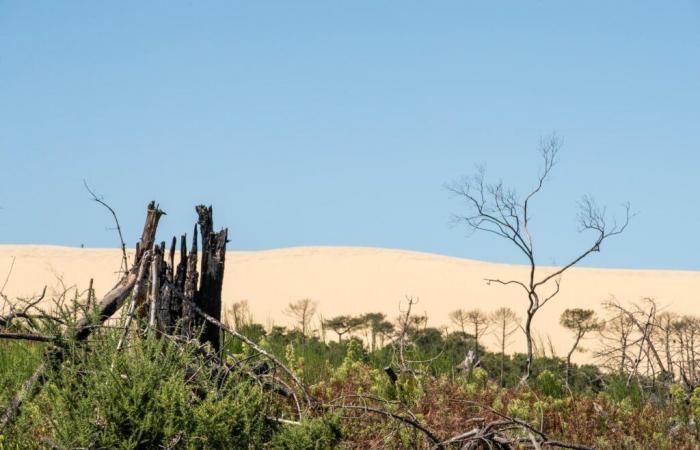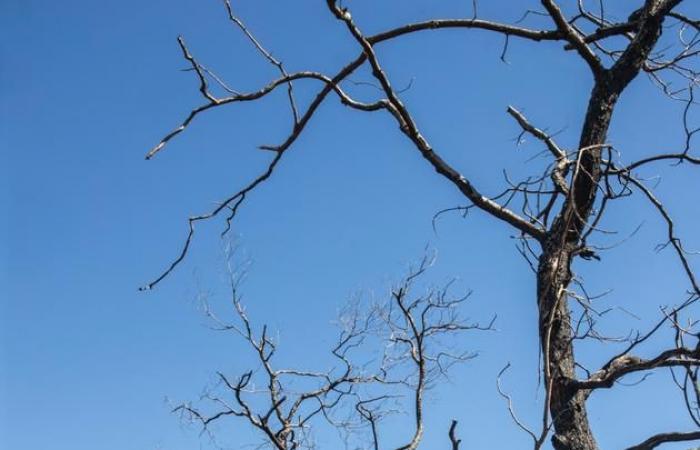Trees 35 meters high, 180 to 200 years old. Here, in La Teste-de-Buch (Gironde), the large maritime pines of the user forest lined the Pilat dune, near the Atlantic coast. Nearly 80% of them burned during the devastating fires of summer 2022, which swallowed 30,000 hectares of forest in the department. Of the 8,500 hectares of used forest, 7,000 have disappeared.
Quickly, after the fire, the owners of this forest, the only one in France to obey management rules dating from the 15the century – a civil contract called the “bailettes and transactions” –, had to organize themselves to put in place, as required by a 1917 transaction, the sale of the damaged wood. Then distribute the revenue between the owners, the municipalities using the forest and the union fund. A huge project then began to evacuate the dead or fatally damaged wood.
Two years of restoration
The winding landscape of this rich forest is now chaotic. On a plot where deciduous trees have started to grow back, Matthieu Cabaussel, vice-president of the free trade union association (ASL) of the forest, shows a 1-year-old pine tree emerging from the sandy soil. “Two years of construction work were necessary to remove the dead wood”he explains. Work completed in the summer of 2024, supported by experts, including Julien Goullier-Lagadec, specialist in forestry engineering, and Jacques Hazera, for the biodiversity part.
During this project, we also had to deal with an invasion of bark beetles, beetle insects which attack weakened pines. “We took a slap in the face: the fire ravaged everything on one side, the bark beetles on the other”laments Matthieu Cabaussel, owner of a plot of forest, acquired by his family around thirty years ago. On his property, 90% of the pines were spared from the flames, but the bark beetle decimated everything. Matthieu Cabaussel takes inventory of the new plants that have appeared since the fire, among the young pine shoots: “Dyer, Canadian erigeron, ailante…” So many invasive species appeared after the fires, which prevent the pines from growing in optimal conditions. “The fern, for example, is the first predator of the young pine, which needs light”he explains.
Read also | Article reserved for our subscribers In the forest as in the city, why the French are attached to trees
Read later
On the side of the road, a sign added after the fires indicates a hunting zone. Matthieu Cabaussel explains: “It is important that hunters come to regulate the deer population. » This deer has the habit of grazing on the terminal bud of the pine, which prevents it from developing. In front of this field of ruins, the forest owner notices that there are “a start of an answer, we will take the time to put everything back in place. We are still in this phase of imbalance from the consequences of the fire”. The period is therefore to observe the natural regeneration of this biodiversity, of which forestry expertise continues. To try to preserve the original stock of these two-hundred-year-old maritime pines, the general trustees took nearly a million seeds from the used forest. A real seed bank that could help support natural regeneration where it will be most difficult.
You have 58.5% of this article left to read. The rest is reserved for subscribers.







